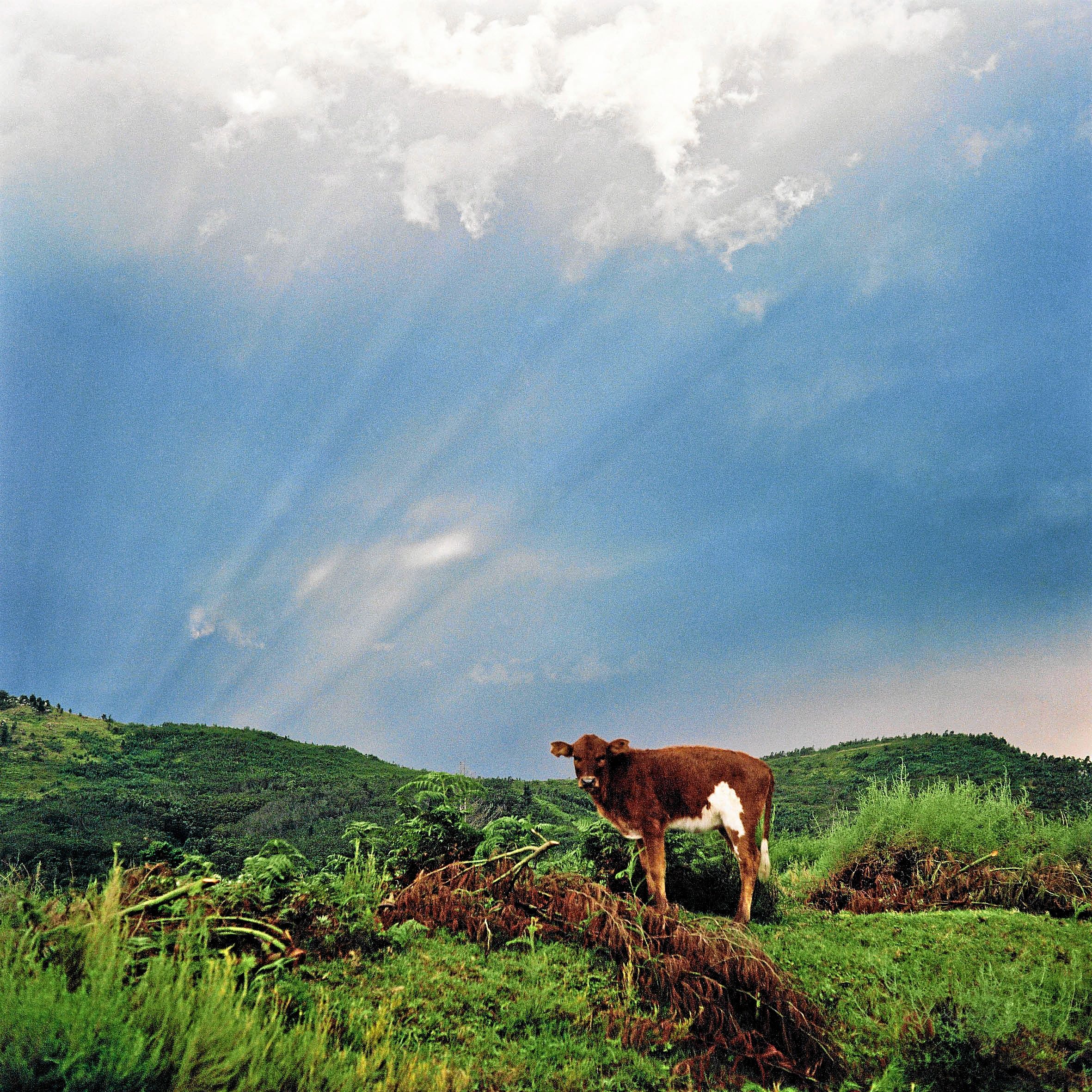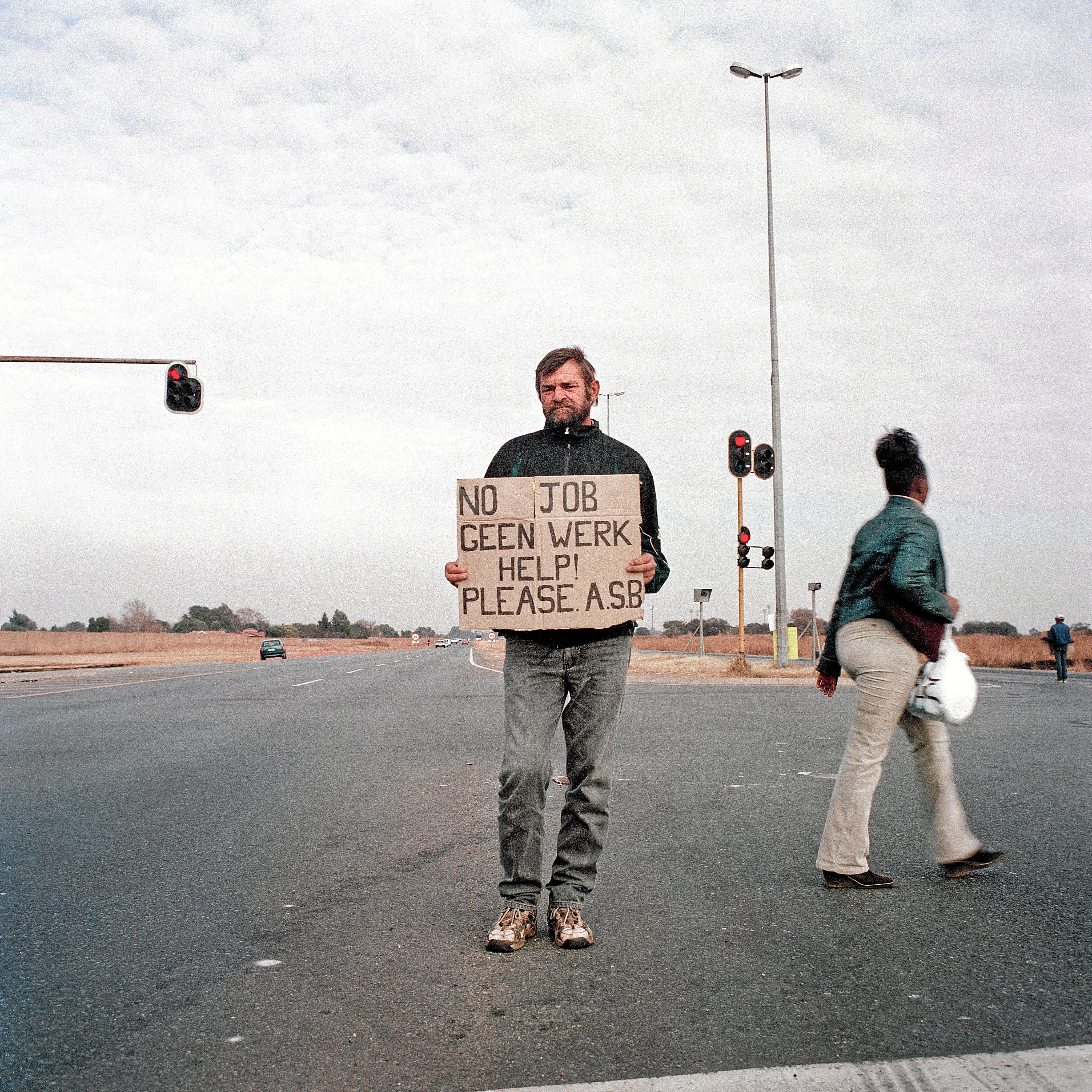In an extraordinary international project
It has become one of art’s ironies that behind a great picture of a woman is a man. Even beyond fashion and beauty images, the art world is populated by male-made photography.
Damien Poulain, a London-based graphic designer and art director is aiming to dilute this gender concentration. Through his POV (Point of View) Female project, started in 2010, he promotes the work of young female photographers from a big city in the world, to give women the same exposure that their male counterparts have become accustomed to. He publishes the books through his independent Oodee house, which focuses on contemporary photography books.
This year he has chosen Johannesburg and the photography of thirtysomething inhabitants Nadine Hutton, Alexia Webster, Nontsikelelo Veleko, Tracy Edser and Lisa King.
Each, like the five sets of emerging photographers before them in Tokyo (2012) and London (2011), will have their work presented in book form as 100 limited edition copies for each artist, producing a five-book set from the city. As in the previous cities, Poulain sourced the artists through recommendations. In this case, he solicited the help of the Johannesburg Market Workshop. Apart from gender, Poulain favours projects that are personal in nature, almost like a diary: “I am not looking at conceptual projects. I do not want to do art for art’s sake.”
Poulain, who arrives in the country at the end of May for the launch of the books at Fourthwall Edition bookshop in Milpark, says he has seen the same kind of interest and excitement about the Johannesburg series as he did in the previous years, where he sold out each set. The books, at 36 pages and costing £18 each, are monographic prints on recycled paper.
The design and layout are deliberately simple; each photograph, set on one page, may be full bleed or cropped, but the focus is always on the subject, often a lone figure holding the viewer’s gaze. Some just rely on the visual display, while others are effective in also using text and storytelling to convey meaning to the images.
Pictures don’t lie
It’s a labour of love for Poulain and the young photographers, whose works were not commercial or commissioned, but individual projects propelled by a personal story, some rooted in a childhood memory that’s refused to dissipate.
It’s in the cloudy pictures of Webster’s Hogsback, her childhood holiday home village in the Eastern Cape, that sits high up on the mountains. “It’s another realm,” says Webster, who was born in Johannesburg and graduated from the University of the Witwatersrand.
There’s a misty magic in her lush images, where each subject reflected under the light holds a story. The series carries an otherworldly quality, but the pictures don’t lie, says Webster. “Hogsback is even more beautiful than the pictures. I think because it’s so high up, the clouds kind of roll over the mountains.”
As she grew up, Webster realised that Hogsback, which during apartheid was surrounded by the Ciskei, was not pure paradise. And this work is the sum total of her yearly efforts to reconcile her childhood memories with adult reality, including that of the inhabitants living in the valley, who were not allowed to own land and whose lives still do not allow them to live their lives in the clouds.

(Alexia Webster)
There is no hiding in documentary photographer Hutton’s I Have Fallen, depicting the hard living of a poor-white community in Pretoria, and who without the safety net the previous government used to provide are sliding further into hopelessness. Hutton started the work in 2003 while on assignment for the Mail & Guardian and came back to continue the project on her own.
Digging deep
She was drawn to the characters here because her own life had been similar to theirs, living in an impoverished white community around the inner city of Johannesburg in a country and time when it was seen as a deviance to be without and white.
“I felt the shame of coming from a poor background, too,” she says.
Hutton has looked her past squarely in the face. You are confronted with it in the opening image of the book of an almost Herculean Gerhard Vermaak, arms veined, holding up cardboard boxes he collects for recycling in exchange for some cash.
As extraordinary as the work is, Hutton says she intends to make the point that there is nothing special about white poverty. “I wanted to look at poverty beyond race, and wanted to look at class. We are so programmed to watch race, to have perceptions of who can be poor and who can be rich and forget that it is a part of society everywhere.”

(Nadine Hutton)
Hutton has really dug deep into the lives of her subjects, many of whom she followed for years, sleeping where they lived. Her pictures are accompanied by a poignant narrative about those living in these communities who are, she writes, “almost safe because they have no real valuable possessions, but feared because they wear their poverty so openly”.
Edser took her photographs for the series Window Rwanda in between her work on a volunteer mission in Rwanda with Operation Smile. All of them were taken in motion, as the car drove past villages, yet many of them are held still by the gaze of the unsuspecting subject.
Initially, Edser was interested in the idea of rape as a weapon of war, particularly in scenes of genocide as in Rwanda. But she knew that she would not have been able to capture this whole country’s story, with such a vast history. So she took what she got and came out with a lot more than she had imagined. “It’s actually like an anti-documentary. If it’s any concept at all, it’s the passing through. I had zero control except to press the button.”
The black-and-white collection is a simple depiction of Rwandans in their daily life, like the man and child playing in the foreground or the young boys playing football.
Minorities in the industry
Veleko’s work, Beauty Is in the Name of the Beholder, gained her international acclaim and her first solo exhibition.
When she was picked by a reputable gallery, it also attracted some detractors. “People started saying that I must have slept with someone to get into the Goodman Gallery,” she laughs.
It is sometimes the burden of being a woman in a man’s world and, says Veleko, she had learned early on that as a minority in the industry she would have to take advantage of every opportunity that came her way.
The photographs in her series were taken around Johannesburg’s Newtown and Carlton Centre. The city, though, is just a backdrop; the subjects are the stars. The collection has become a celebration of fashion and youth, both of which were not intended, says Veleko.
Interestingly, what she had set out to do was to explore the idea of male beauty and sought out male subjects mostly. “I do not think it is a perspective a male photographer would have thought of exploring.”
King’s Ghanzi is an homage to a place in Botswana that’s held her imagination since 1988. “We were on a family trip, driving back home, but were not going to make the border in time and so we camped in Ghanzi.”
King, whose work focuses on long-term documentary projects, says she has vivid memories of the dusty road and thunderstorm at night. She went back as an adult wanting to know about this Kalahari desert town’s history. It is now home to a variety of settlers: the Hereros, Voortrekkers and British. By documenting the agricultural fair, a major event, King wanted to capture the “interesting assimilation of the different groups” of the town.
It’s an honour, says King, to be featured in an all-woman ensemble.
Webster concurs: “The women involved in the project are all very talented photographers with unique perspectives and whose work I respect.”
Yet, she adds, she is hesitant to put too much emphasis on gender when describing her work.“I think there are many other aspects of my identity that had equal influence on me; where I was born, my family, my community and my experiences,” says Webster.
A certain mystery
For Hutton, gender had everything to do with this series, because gender has to do with everything: “How you see, how you relate to the world around you.”
At the time of this project, Hutton had just realised she was homosexual and believes that this search for self was the reason why this project became a personal mission.
“When you discover things about yourself I think it’s natural to go back into your past, to try to discover what paths led you here.”
What the reader will take away from the series is that there is a certain mystery in all five photographers’ works; maybe this is what Poulain is trying to grasp when he says that he has always found that the female perspective carries a “certain sensibility”, but he admits that it is one that he finds hard to define.
Gender is a bendable border, but it is also an identity that is impossible to escape. And it is a perspective that has allowed these five from Johannesburg to search deeper, in the crevices that can easily be overlooked by others in society. And what has been the result might be hard to identify, but is easily felt.
They are, as Poulain says, “honest projects, done by themselves and for themselves”. They have opened themselves up and because of that we can enjoy a much better and much broader view of the world.